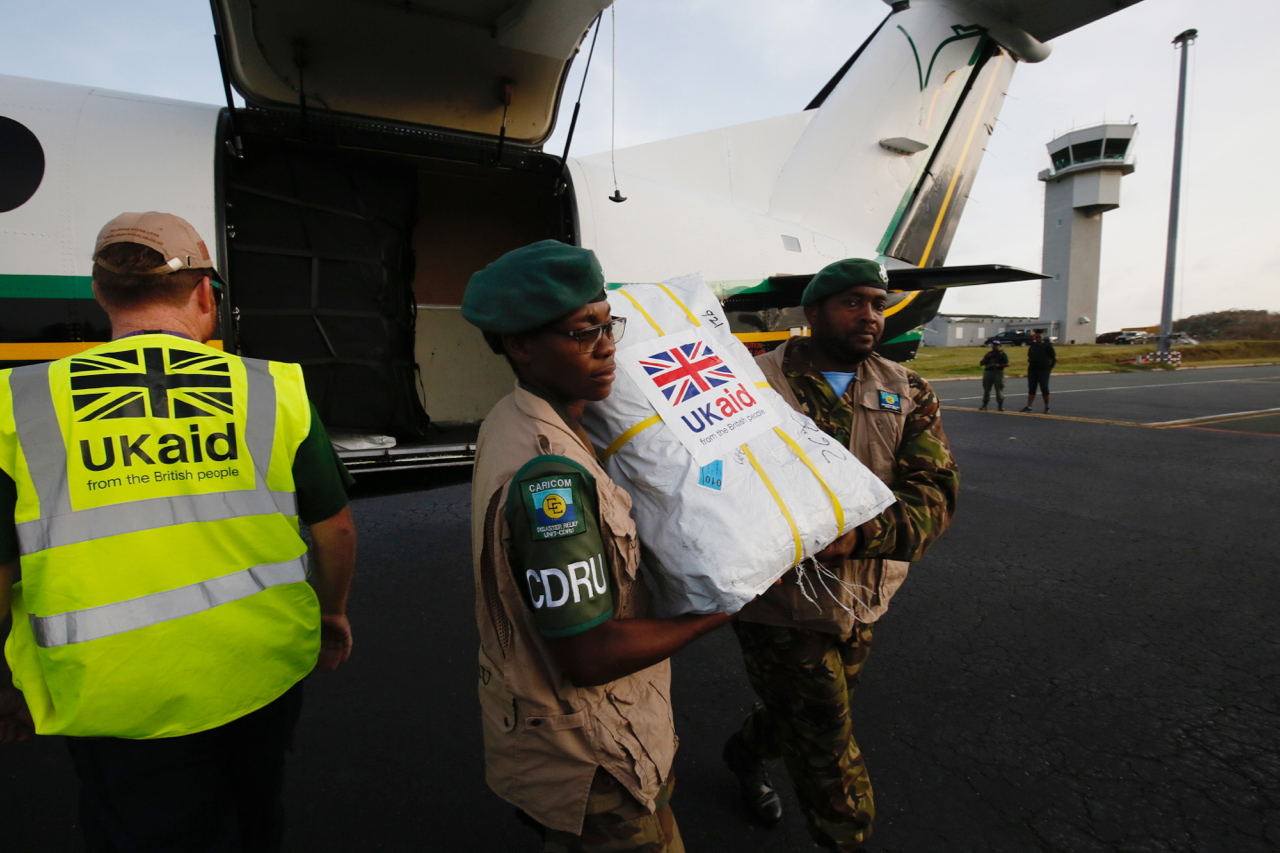The emerging consensus is that the response to Ebola is a test that most rich countries failed. Given that the next public health challenge is a ‘when’, not an ‘if’, what can we do to be more prepared for the next emergency?
Cat bonds might be part of the solution. For the uninitiated, this has nothing to do with securitising housepets: the ‘cat’ stands for ‘catastrophe.’ Cat bonds work like regular bonds, with the twist that if a pre-agreed ‘bad thing’ happens, investors forfeit their cash to the borrower, who can spend it right away — for example to tackle an emergency or pay for recovery.
Scaling up
The World Bank issued its first one in June last year to help cover the insurance costs for earthquake and cyclone risks of 16 Caribbean countries. Now, it wants to scale up and across. The Financial Times reported from Davos that the Bank wants “...to create a global fund that would issue bonds to finance pandemic fighting measures by governments and other bodies.”
It’s not alone. Richard Wilcox, interim director general of African Risk Capacity (ARC) — an underwriter created to help African governments insure themselves against infrequent-but-costly disasters like poor harvests — told reporters that his organisation wanted to offer pandemic insurance to African governments by 2017.
Disaster-risk financing for developing countries is hardly new. But with a shout-out at Davos and growing buzz in the run-up to a headline conference on financing for development in Addis Ababa this July, cat bonds seem poised for their day in the sun.
Lest a useful piece of financial innovation fall prey to the development hype cycle, it’s worth pinning down what these contracts can and can’t do.
The can-do
Cat bonds’ promise lies in the insurance facility they provide. Governments benefit from assured payouts when hit by bad shocks; unlike donors’ unenforceable pledges, these bonds pay out specific amounts under unambiguous conditions.
Compare and contrast: as Amanda Glassman and Karen Grépin noted, it took the WHO five months to declare the Ebola outbreak an emergency. Even if the organisation had access to fully funded contingency fund, they’re not convinced that it would have been triggered — and certainly not with the predictability and immediacy that is a feature of catastrophe bonds.
The investors themselves still seem keen: if the ‘bad thing’ doesn’t happen, they earn a nice payday. Better yet, as one typically breathless industry briefing puts it, cat bonds “are almost entirely uncorrelated with macroeconomic variables.” This means that cat bonds pay out when other assets don’t, and vice versa, a property much-beloved of portfolio managers.
Live deal tracking shows that, as a result, demand for these has grown at a fast clip, totaling $23 billion today (of which nearly $1 billion was issued in just the first few weeks of 2015). Healthy demand for these products drives down yields, making cat bonds potentially a cheaper way to provide insurance against some types of risks.
Trigger happy?
Insurance contracts need triggers for payouts that are measurable and transparent: we all have access to the same seismological data, so we can all agree whether or not an earthquake of magnitude 7.3 hit Port Vila.
But many of the problems we’d like to insure against don’t benefit from the same data infrastructure. One of the constraints on mounting an early defense against Ebola, for example, was the lack of monitoring and early warning systems. The “pandemic bonds” proposed for dealing with these risks would need to be priced and triggered based on credible, transparent, and timely data about the spread of diseases— effectively presupposing the existence of institutions that, were they in place, might reduce the need for risk financing in the first place.
Even when we can agree on a so-called “parametric trigger”, it’s not clear that catastrophe bonds are the best way to insure countries against shocks. The Pacific Catastrophe Risk Insurance Pilot, for example, pools risks from five Pacific island countries for total coverage of $43 million against tropical storms, earthquakes and tsunamis. Rather than a catastrophe bond, it is a traditional insurance contract. Structuring the transaction as a catastrophe bond might lower the cost of the insurance, but only if enough investors can be enticed to take the other side of the transaction.
These contracts could also create new risks if they make policymakers spend less on prevention, a problem economists call moral hazard. Imagine an overworked civil servant at the end of long budget meeting with her Minister, faced with a choice between, say, training additional midwives or investing in frontline monitoring for an unknown, future outbreak. I know that I’d pay for the immediate need — especially if I had some type of fiscal cover if I needed it. It might sound deeply uncharitable to claim that insuring against these risks affects our incentives; then again, I would think you uncharitable if you told me offering insurance refunds to drivers for not crashing would reduce accidents or that financial incentives reduced drug use or convinced people to stop smoking– but both do.
Solve some of the problems, some of the time
The excitement about finding new uses for catastrophe bonds is healthy. Cat bonds are perfectly suited for some jobs. And if investors remain enthusiastic about piling into frontier market cat bonds, they could provide a cheaper alternative to traditional insurance contracts.
Where they are appropriate, these instruments can bring market rigour to bear on the longstanding problems of how governments with stretched budgets pay for emergencies, and make sure those funds are mobilised when they’re needed. They also provide a clear framework for donors to choose how and how much to chip in, for example by covering interest payments or by guaranteeing the outstanding debt. Compared to unenforceable pledges to buy unknowable amounts of development impact, that’s progress.
But however sexy financial innovation for development might sound, it shouldn’t distract us from paying for and helping to build boring but essential public goods, including better data for development. Those investments are enabling technologies that would make insurance contracts and catastrophe bonds feasible— and perhaps even reduce the need for them in the first place.
Thanks to Matthew Juden for helpful comments.
Disclaimer
CGD blog posts reflect the views of the authors, drawing on prior research and experience in their areas of expertise. CGD is a nonpartisan, independent organization and does not take institutional positions.





